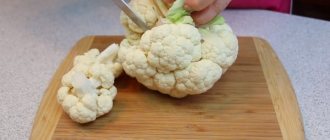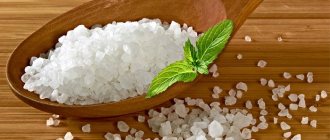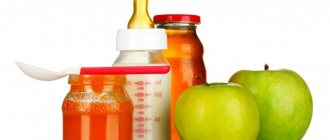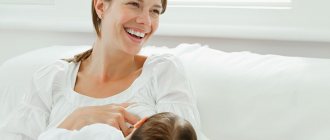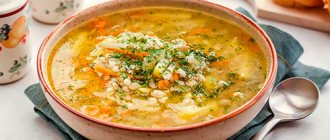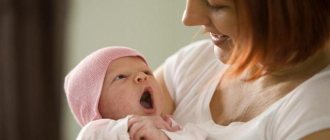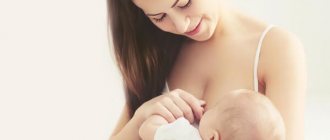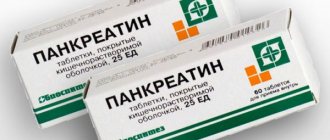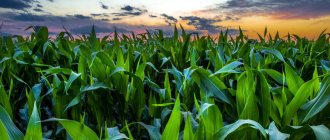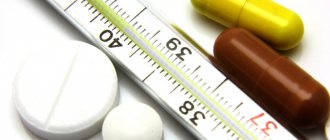Sea kale is one of the products that actively affects the body. The high concentration of iodine makes kelp dangerous for pregnant women with endocrine problems, but in the future the product can bring many benefits to a nursing mother. Kelp dishes are allowed during breastfeeding, unless the mother has individual contraindications.
Composition and benefits of seaweed
Sea kale or kelp is a type of seaweed used as food. In Russia, it is mined on the Pacific coast of the Far East. The product is considered dietary, it contains few calories and is used in the manufacture of many food supplements due to its medicinal properties.
For a nursing mother, seaweed is really very useful. 100 grams of kelp contains the daily requirement of iodine recommended for an adult, which is very important for the proper functioning of the endocrine system. Iodine helps remove harmful substances from the body, including heavy metals, which is especially important for a nursing woman living in a metropolis or region with an unfavorable environment.
Sea kale also contains other components that improve health:
- vitamins of groups C and A, as well as folic acid, which contribute to: improving brain function;
- strengthening the nervous system;
- improving physical endurance;
- strengthening memory and vision;
Laminaria is a source of macro- and microelements, which include phosphorus and magnesium. By consuming it daily, a young mother can be protected from diabetes and oncology. The product is effective in combating stress and chronic fatigue.

Seaweed is effective in combating stress and chronic fatigue
During pregnancy and after the birth of my daughter, I really wanted seaweed - when I saw it in the store, I was drooling. Most likely, my body lacked the beneficial components contained in kelp. But I got used to not denying myself food, especially since I tried to eat everything in small quantities. For the first time after giving birth, I ate seaweed when my daughter was one month old. I didn’t know that it wasn’t allowed during this period. And I must say that everything was fine with the baby. But, of course, I was lucky, but in general you need to consult a doctor on nutrition issues.
Properties of kelp
Among the properties, the product’s ability to normalize the functionality of the nervous system, remove toxins and heavy metal salts from the body, normalize intestinal function, and relieve constipation is highlighted. Laminaria is indicated for:
- iron deficiency anemia;
- atonic constipation;
- hyperfunction of the thyroid gland;
- heart and vascular diseases;
- chronic fatigue syndrome.
Laminaria during breastfeeding prevents the development of diabetes, cancer, and atherosclerosis. Sea kale improves vision, memory, and cleanses blood vessels. The product is used in cosmetology. It has a bactericidal effect. It is included in masks and wraps.
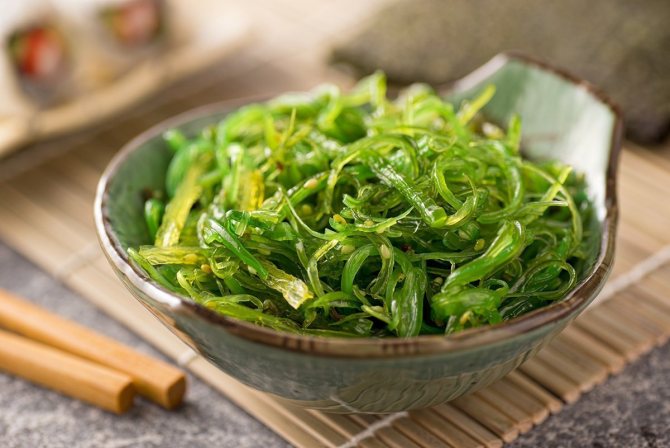
The beneficial properties of kelp are also due to the presence of alginic acid, which is an analogue of fruit pectin.
Is seaweed allowed during breastfeeding?
During lactation, the use of kelp is not prohibited. However, the following contraindications must be excluded:
- baby age up to three months;
- haemorrhoids;
- tuberculosis;
- endocrine problems.
In other cases, a woman is even recommended to eat seaweed.
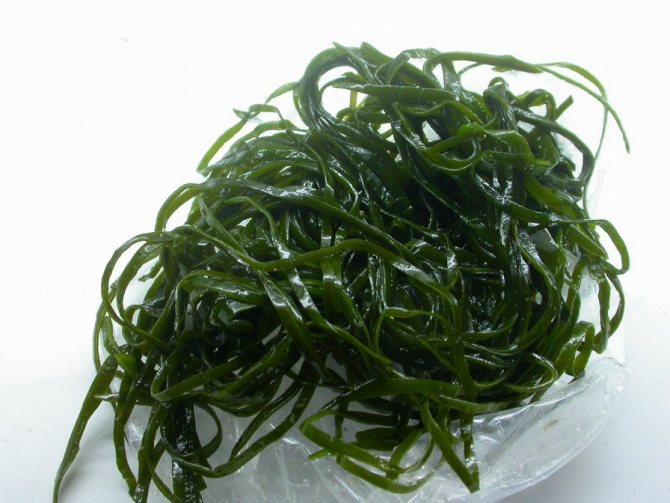
If during pregnancy a woman had problems with the pancreas, then, in order to avoid their aggravation, before starting to use kelp, you should consult a doctor
If during pregnancy a woman had problems with the pancreas, then, in order to avoid their aggravation, before starting to use kelp, you should consult a doctor.
Why is seaweed prohibited during the first 3 months of breastfeeding?
Starting from three months, the baby develops immunity, so he can more easily tolerate changes in the composition of his mother’s breast milk. In the first months of lactation (especially in the first 30 days), a woman must adhere to a strict diet. Otherwise, the baby may develop stomach problems, colic and other unpleasant problems, due to which he will not be able to calm down and fall asleep. In addition, in the first three months of pregnancy, the mother’s consumption of seaweed can lead to allergies in the child.
Contraindications
Healing algae is not always useful and not for everyone. Their use should be limited to those nursing mothers who have any of these pathologies:
- diseases of the gastrointestinal tract;
- liver diseases;
- gallbladder pathology;
- tuberculosis;
- atopic dermatitis;
- thyroid diseases.
Sea kale is also prohibited when breastfeeding a newborn. It can negatively affect the infant’s unformed gastrointestinal tract.
Rules for using seaweed during lactation
When breastfeeding, it is better to use kelp in boiled or dried form. If such cabbage is well digested by the baby, which will be noticeable after two days, then you can eat pickled seaweed. However, it is recommended to start taking it in this form when the child turns 6 months old. But it is better not to use canned (especially in industrial conditions) kelp.
For the first time, a nursing mother can eat 30–50 g of seaweed after completing morning breastfeeding. And approximately 2 hours before using it, the young mother should have breakfast. After this, the child’s reaction must be monitored for 36 hours. You should be wary of:
- irritability;
- tearfulness;
- the appearance of diarrhea or constipation;
- the presence of colic (the baby presses his legs to his stomach and screams).
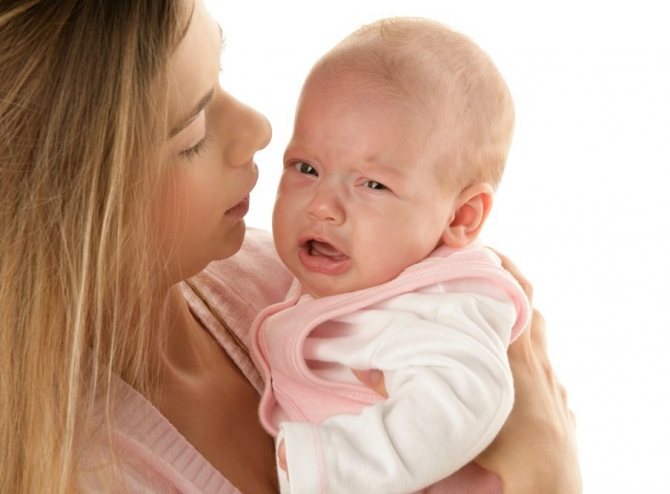
Irritability and tearfulness of the baby should be a reason for the mother to stop taking seaweed
In all these cases, it is recommended to refuse further use of kelp. If everything is fine with the baby, then a nursing mother can consume 150 g of the product per day (2-3 times a week).
While taking kelp, a woman should refuse to introduce new products into her diet, which will help track the reaction specifically to seaweed.
After giving birth, I ate 50 grams of seaweed at a time, and then I began to eat more. Apparently, my body really needed such food. At the same time, I didn’t eat kelp every day, but once or twice a week.
How to choose seaweed
Give preference to the product in dry, fresh or frozen form. Its color should be uniform, dark green, and its smell should be characteristic of kelp. Do not consider cabbage, which contains admixtures of other plants. Dried kelp is sold in the form of a greenish powder, without fine grinding or any impurities . Frozen kelp ideally does not have a musty odor, its surface is uniform, without darkening in some areas.
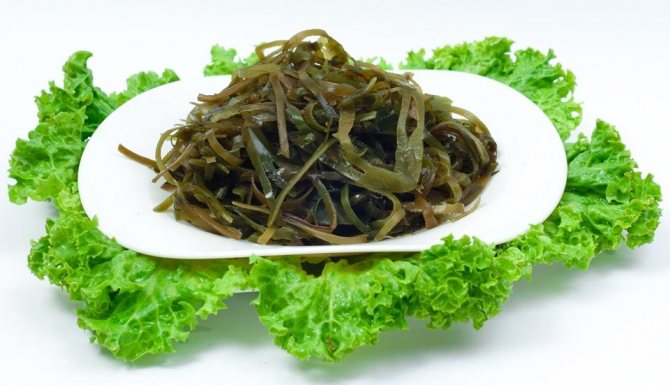
The color of seaweed should be uniform, dark green, and the smell should be characteristic of kelp
Where did chuka salad come from?
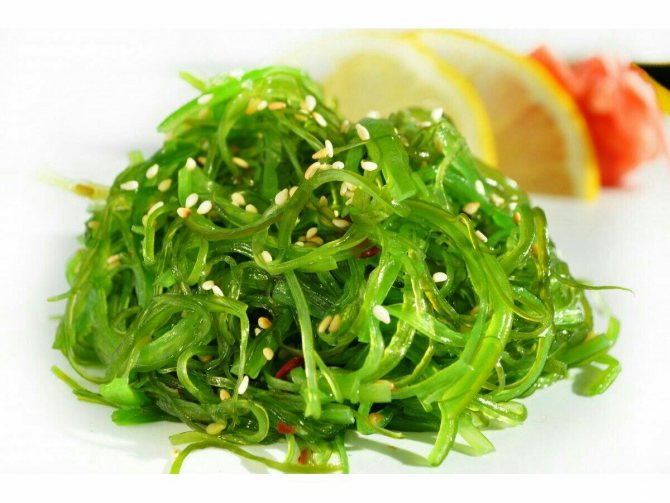
Due to its good taste and rich content of nutrients, seaweed is widely used in the traditional national cuisine of the peoples of East Asia. Their dishes have taken a definite place in the cuisine of many coastal countries. They are used to prepare salads, soups, sushi and rolls.
Marine plants contain large amounts of iodine, phytohormones, proteins and microelements, as well as vitamins necessary for the human body. The consumption of algae as food by many peoples is considered one of the main sources of health.
Today, Japanese chuka seaweed salad has gained unprecedented popularity throughout the world. This is on the menu for people who want to lose weight, build muscle, improve immunity, and are also vegetarian. The composition of the salad may vary depending on the country and culinary tradition, it may contain additional ingredients, but it is based on extremely healthy seaweed.
Chinese seaweed from Japan
The Russian name for the algae is Undaria pinnata, the Korean name is miyok, and the Japanese name is wakame.
However, they are better known throughout the world as "chuka" (yukariori). Literally translated from Japanese, it means “imported from China”, “Chinese cuisine”. This name in Japan is used for many seaweed dishes that were developed in traditional Japanese cuisine from imported Chinese dishes. However, the very essence of this food has changed so much that the Chinese no longer recognize these dishes as their own. However, this name has survived and become famous throughout the world.
Initially, Japan not only did not have its own dishes made from chuka seaweed, but even the craft of production. Seaweed was bought from the Chinese, and recipes were also adopted.
Despite the use of chuka seaweed in the cooking of various Far Eastern peoples, it still remains the most popular in Japan. Japanese cuisine has long been famous for its careful selection of only healthy products. No wonder: wakame contains a rich set of microelements, vitamins, fiber and collagen . In Japan, this product is considered a gift of youth and longevity.
Wakame grows in large quantities on coastal rocks and is not difficult to obtain. In addition, it has a pleasant, subtle taste, which distinguishes it from the more intense taste of all known algae.
Currently, wakame seaweed is produced on an industrial scale in Japan, China and Korea. The product is shipped all over the world in dry and frozen form.
Recipes for dishes with seaweed
A nursing mother can use kelp with other products to create different dishes. Thanks to this “additive” their taste will be piquant and unusual. Let's look at the most popular dishes for nursing mothers.
Seaweed soup
Prepare the following ingredients:
- potatoes - 3-4 large pieces;
- carrots - 1 pc. (medium size);
- onion - 1 pc. (medium size);
- fresh seaweed - 200 grams;
- canned peas - 1 jar (400 gr.);
- boiled chicken egg - 2 pieces;
- dill.
Start cooking:
- Finely chop the onion.
- Grate the carrots on a coarse grater.
- Cut the potatoes into 1 cm cubes.
- Pour water into a 3-liter saucepan and bring it to a boil.
- Place the potatoes, carrots and onions in the pan and cook for about six minutes, add salt.
- Add peas and seaweed without liquid to the pan.
- Grate the pre-boiled eggs on a coarse grater and drop into the soup.
- Finely chop the dill and add it to the pan. Cook until done.
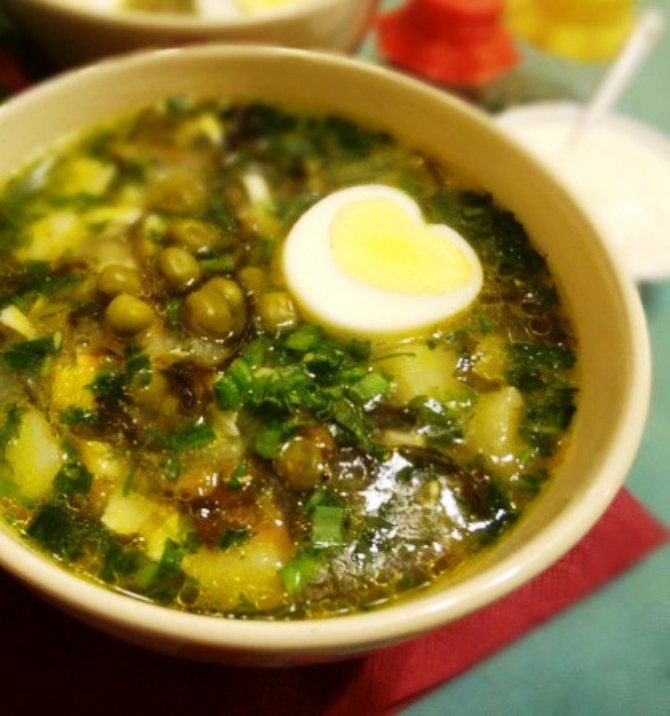
In the soup, seaweed should be cooked for at least ten minutes.
Fresh kelp should be boiled for 10 minutes.
Kelp salad
For two servings of salad you will need the following products:
- 2 cups pickled seaweed;
- onion head;
- 100 g Korean carrots;
- a little red pepper;
- any greenery;
- vegetable or olive oil - to taste;
- a teaspoon of vinegar;
- a pinch of sugar;
- a little salt.
Now start preparing the salad:
- Wash the greens well and chop them.
- Peel the onions and cut into rings.
- Grate the carrots on a coarse grater, chop the pepper into smaller pieces.
- Place the onion rings in a bowl, sprinkle vinegar on them, sprinkle them with salt and sugar and remember well. Leave the onion for 5 minutes.
- Add greens and seaweed to the onion (boil it for ten minutes in advance), sprinkle pepper on top and pour over vegetable or olive oil.
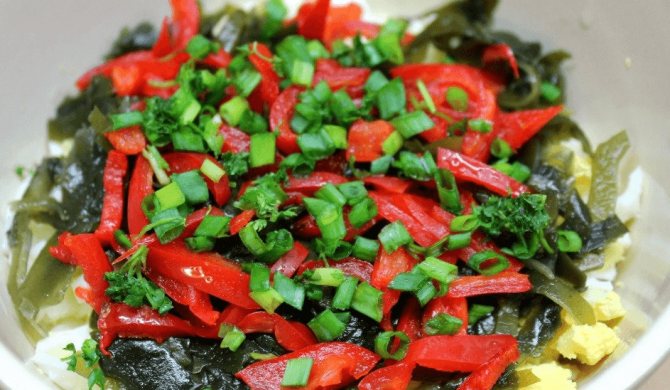
You can make a healthy salad from seaweed
All that remains is to mix everything, and our healthy salad for nursing mothers is ready. Boiled kelp can be used as a filling for pies: it would be nice to mix it with fish.
I really love seaweed squid salad. Laminaria is added to it (preferably boiled, and when the baby grows up to six months, you can use a pickled product), boiled squid, olive or vegetable oil (I like it better with olive oil). You can add a little different greens.
You will find more recipes for healthy salads in our article - Preparing salads for a nursing mother from the right products.
Doctor Komarovsky's opinion
The famous pediatrician Evgeniy Komarovsky claims that seaweed is the source of many useful components that we listed above in the section “Benefits of seaweed, its composition.” Thanks to them, a child, feeding on the milk of a mother who consumes kelp, can fully develop and grow well. The doctor is convinced that seaweed must be present in the diet of a breastfeeding woman. However, in his opinion, it is necessary to observe the dosage and gradually introduce this product into the diet.

Dr. Komarovsky is convinced that seaweed must be present in the diet of a breastfeeding woman
